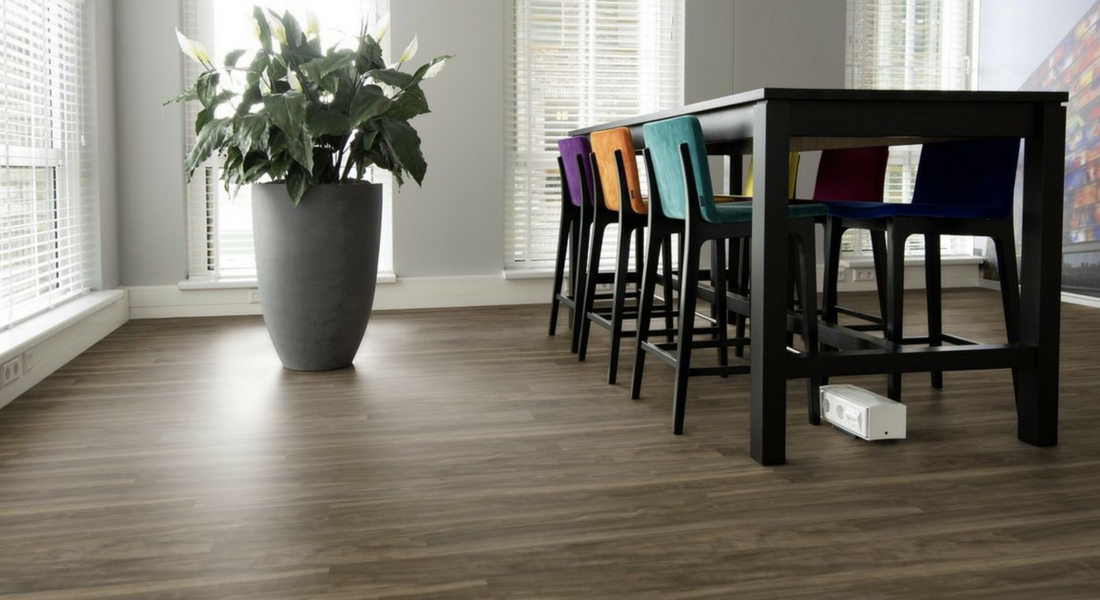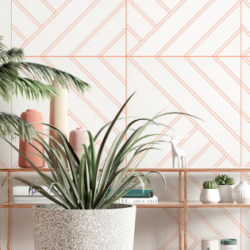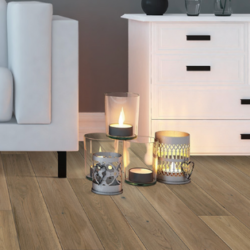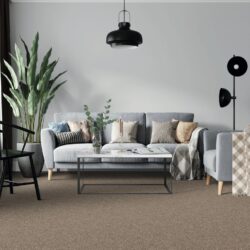In commercial interior design settings, the scope for every project is unique. Different objectives and functions call for different approaches. Although there are many interchangeable elements throughout the production of a space, commercial flooring is pretty straightforward. There are a handful of go-to products for a commercial interior designer when it comes to high-traffic projects. A key factor in determining which flooring product to go with is oftentimes the material’s lifespan.
Typically, interior designers weigh the pros and cons of different commercial flooring types and then prioritize what the bottom line is for each particular project. For example, let’s say that a certain product has the look that is desired but offers a shorter lifespan and bigger cost. The designer may choose to look into another material that is similar in style, but has more longevity and a better price point.
There are many considerations when it comes to the effects flooring can have on a space, from functionality to repairs to maintenance. To help sort things out, we’ll outline details of the main materials we recommend for successful commercial flooring projects.
Ready to roll? Let’s get to it.
Porcelain or ceramic tile
Both porcelain tile and ceramic tile are made to sustain decades of high-traffic wear and tear. If installed and maintained well, they can last 50 years or more! Porcelain and ceramic tile are also fairly resistant to elements like water, debris, and stains. Scratches and chips are possible, which can up the amount of maintenance due to the need for repairs or replacements. The amount of regular maintenance depends on the space that the flooring is installed. Generally speaking, cleaning tile is simpler than that of natural materials like stone or hardwood.
Resilient flooring
There are so many different types of resilient flooring options these days. LVT, rubber, and cork are the main ones we stick to for commercial flooring projects. They’re durable, beautiful, and they fit all budget types. Resilient flooring products are simple to maintain and are the most cost-effective of all materials. The downside, if there is one, is that resilient doesn’t have the same lifespan as tile or hardwood. At best, the flooring will last about 20 years, give or take. This tends to be a great option for commercial projects because most spaces undergo routine facelifts every decade or so. It’s really all about the goal and strategy of the interior designer and/or the business itself.
Natural hardwood
Although fading in natural hardwood will take palace after a couple of decades, the flooring itself usually lasts a lifetime. When installed properly, natural hardwood flooring can be a beautiful, durable addition to a space. However, due to its nature, it requires quite a bit of regular maintenance. In fact, it is considered one of the most difficult to maintain surfaces because of its need to be dusted, mopped, and polished to stay in pristine condition. For that reason, we recommend utilizing a wood look flooring option. This way, you get the look of hardwood, but without the hassle.
Now that you’ve got a go-to list of commercial flooring lifespans, it’s time for the [really] good stuff!
Browse products by region or simplify the process and reach out to your local surface ninja here. You can also give us a call to expedite the conversation and get things rolling sooner rather than later: 866-774-3390.
Categorised in: Uncategorized
This post was written by Claire Scoon







